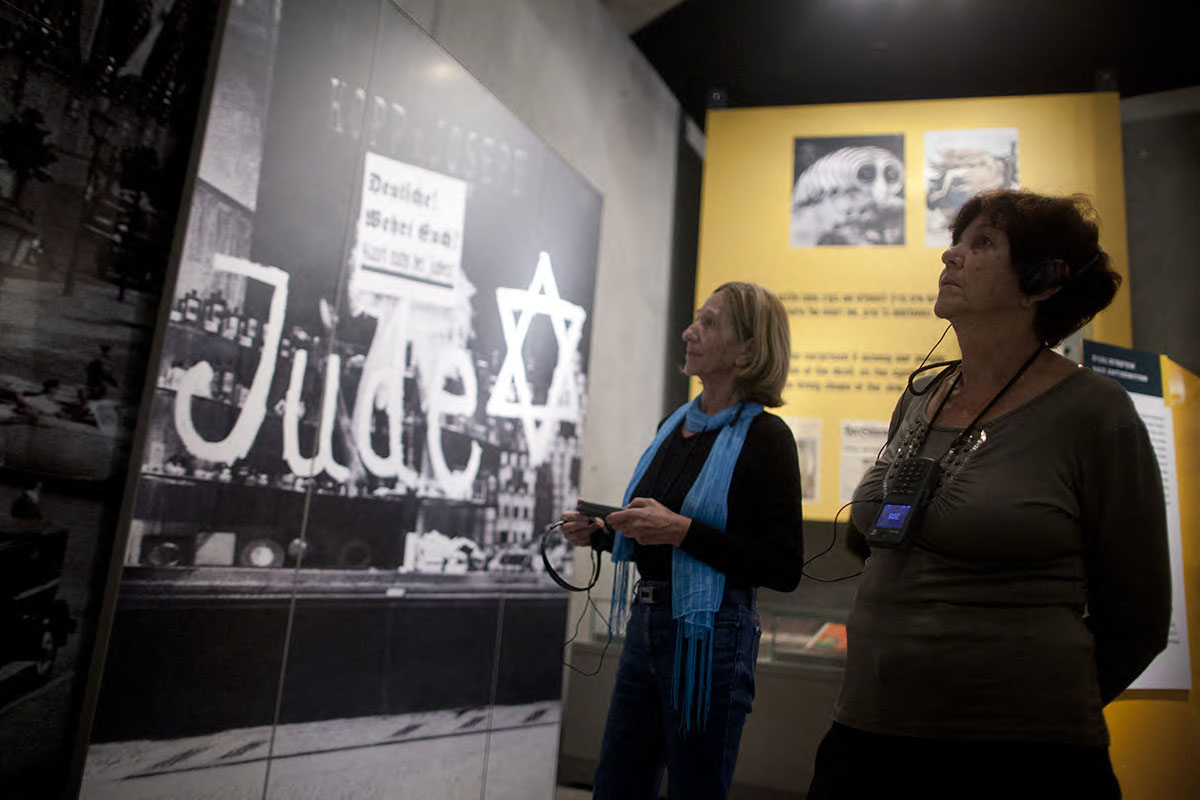- For a description of the expulsion of Jewish academics from the Berlin-Charlottenburg T.H. see Hans Ebert, “The Expulsion of the Jews from the Berlin-Charlottenburg Technische Hochschule,” Leo Baeck Institute Year Book, Vol. XIX, 1974, pp. 155–171. The University of Heidelberg, established in 1386 by the Elector Palatine of the Rhine, Ruprecht I, for several centuries played a significant role in the spiritual life of Central Europe. In May 1803, during the Napoleonic wars, Karl Friedrich, Markgraf of Baden, issued an edict for the re-organisation of the university. This edict effected a departure from the medieval tradition of studium generale, according to which education had been regarded primarily as a tool of the state. More important, it gave impetus to the modern concept of freedom in research and instruction, and thus to modern scholarship. The 1803 act of renewal was seen by as an event equal in importance to the foundation of the university in 1386. The event was perpetuated by naming the university after its two founders (the Ruprecht-Karl or Ruperto-Carola Universitaet). During the 19th century, as Wissenschaft and Bildung developed as the main concepts of German academic life, the gradual emancipation of German Jewry brought some Jews into the universities. (Discussion of the contribution of German Jewish academics to science in general and to German Wissenschaft in particular exceeds the bounds of this study.)
- Universitaetsarchiv Heidelberg (hereafter – UAHD), III, 55b, No. 332.
- Rabbi Pinkus was head of the Jewish community in Baden (Bezirksrabbiner).
- UAHD, VIII, 1, records of the university's disciplinary court, No. 290.
- Reichsgesetzblatt (hereafter – RGBl) I, 1933, p. 175.
- It should be noted that the definition was in no way based on racial criteria. The sole criterion for categorisation into the “Aryan” and “non-Aryan” was the Jewish faith of the individual's ancestors, regardless of his own religion. See Raul Hilberg, The Destruction of European Jewry, Chicago, 1967, pp. 45–51.
- RGBl I, 1933, pp. 1333–34.
- “Reichs-Habilitationsordnung,” December 13, 1934, Amtsblatt des Reichsministeriums fuer Wissenschaft, Erziehung und Volksbildung (hereafter – ABl), I, 12–14, ABl IXXV, 277, No. 340.
- Those dismissed according to the Civil Service Act of April 7, 1933, also lost some of the benefits ordinarily guaranteed by the State. They were not guaranteed pensions unless they had been in office at least ten years. Those “relieved of their official duties” by the law of January 21, 1935, were to receive their lawful salary but not tuition fees. Professors lost what was known as the Kolleggeld, which normally accrued to a professor according to his number of “listeners,” in some cases “guaranteed” to a professor by the State as an equivalent for the tuition of a fixed number of students, whether he had them or not, and which normally amounted to about a quarter of his total pay. As for the salary itself, it was cut so that the “retired professor” (beurlaubt) received as a rule about half his former income. Eduard Y. Hartshorne, The German Universities and National-Socialism, Cambridge, Massachusetts, 1937, p. 176.
- The personal files of the Heidelberg professors were not made available to this writer. The data collected was gathered through interviews, foreign reports, and assessments made by investigations of other documents.
- Hartshorne, op. cit., p. 94, Table II – “Proportional Faculty Losses of the Various Universities (exclusive of assistants).”
- Heidelberg and the Universities of America, New York, 1936.
- Max von Waldberg, Professor of Modern Literature, was dismissed on July 7, 1933. He, as well as Prof. Friedrich Gundolf (also born a Jew), were the teachers of Dr. Joseph Goebbels.
- Wilhelm Salomon Calvi, Professor of Geology, born to Jewish parents, converted to Catholicism on November 4, 1892, as an 11-year old boy.
- In 1924 Marianne Weber, Prof. Max Weber's widow, established a private circle for intellectual activities which met weekly in her house in Heidelberg. The participants in this circle were mainly the liberal professors of the university. In a summary of this circle's activities (Akademische Gesellschaft 1924–1944; Gustav Radbruch zum 70. Geburtstag, November 21, 1948), Marianne Weber described the meetings held after Hitler's seizure of power: “Those attending the circle's meetings had to do so very carefully, particularly those people who – without the protection of the Party decorations – were vulnerable as suspected liberals and doubly so those who maintained connections with their Jewish friends. The debates in the circle's sessions over actual questions of the hour had to be concealed... One had to remain inconspicuous; despite all efforts the circle was constantly watched... [All those members who, after the take over] had reasons to demonstrate their loyalty to the new State, by joining the S.A. or other Nazi affiliates, had to resign [from the circle]... The circle consisted now essentially of old familiar friends... unified in their attitude to the new State and who had to trust each other.” (Radbruch, Nachlass, Universitaetsbibliothek Heidelberg).
- The information about Karl Jaspers seems somewhat confusing. The following assessments represent the various opinions gathered by this writer: Dr. Weissert of the Universitaetsarchiv of Heidelberg claims that his dismissal was on political grounds. Hannah Arendt said in an interview that Jaspers tried to maintain a distance from the Nazis. In 1935, according to Hannah Arendt, he taught Spinoza at the university. In an interview with Prof. Dolf Sternberger, who was once a student of Jaspers, as was Hannah Arendt, he asserted that Jaspers had to leave Heidelberg because his wife was Jewish. Finally, Prof. Daniel Penham of Columbia University, in 1945–1946 the chief officer in American counterintelligence, told this writer that Jaspers received permission from the Nazi authorities to leave Germany to attend an academic convention in Holland in 1937, on the condition that he gather some valuable information. Jaspers accepted the condition.
- For a detailed account of the fate of German Jewish academics, see Hartshorne, op. cit.
- The following examples illustrate the fate of Jewish scholars from Heidelberg who found refuge abroad: Emil Lederer, who had courageously struggled on behalf of his colleague E. Gumbel throughout the entire Gumbel Affair, emigrated to the U.S. a short time after he had joined the teaching staff at the University of Berlin. In the U.S. he was one of the founders of the New School for Social Research in New York. Emil Gumbel emigrated to the U.S. and settled in New York after teaching for a few years in France, and after being deprived of his German citizenship by the Nazi authorities. On November 17, 1933, his colleague, the Dean of the Faculty of Philosophy at that time, Professor Herman Guentert, who later became a registered member of the Nazi Party, in a letter to the Rector, commended Taeubler's scientific activities as well as his achievements in seminars, and urged him to let Taeubler enjoy all his honorary pension rights. Taeubler emigrated to the U.S. and later taught in Cincinnati. Among others who also emigrated to the U.S. were: Leonard Olschki, Professor of Roman Philology who later taught at Johns Hopkins University; Arthur Salz, Professor of Economics, who later taught at Ohio State University; Herman Ranke, Professor of Egyptology, who joined the University of Pennsylvania; and Heinrich Kronstein, professor in the Faculty of Law at Heidelberg, who joined the staff of the Library of Congress. They all were aided by the Emergency Committee for the Aid of Displaced Foreign Scholars. Herbert Sultan, Professor of National Economics, emigrated to England.
- Hartshorne, op. cit., p. 94.
- Ibid. , p. 101 f.
- Emil J. Gumbel, Die Gleichschaltung der deutschen Hochschulen, Strasbourg, 1938, pp. 9–10. (This material was placed at my disposal by the Leo Baeck Institute, New York.)
- While the Fuehrerprinzip constituted the new institutional framework for the university, the Fuehrerstab emerged as the body in which university matters were to be decided. During the period under investigation, it was comprised of the Fuehrer , Prof. Wilhelm Groh; the local Studentenfuehrer , Gustav Adolf Scheel, who later became the Reichsstudentenfuehrer , and was Hitler's nominee for Minister of Education in 1945; the Kanzler , Prof. Johannes Stein; and his deputy Prof. Hans Himmel.
Sunday to Thursday: 09:00-17:00
Fridays and Holiday eves: 09:00-14:00
Yad Vashem is closed on Saturdays and all Jewish Holidays.
Entrance to the Holocaust History Museum is not permitted for children under the age of 10. Babies in strollers or carriers will not be permitted to enter.






